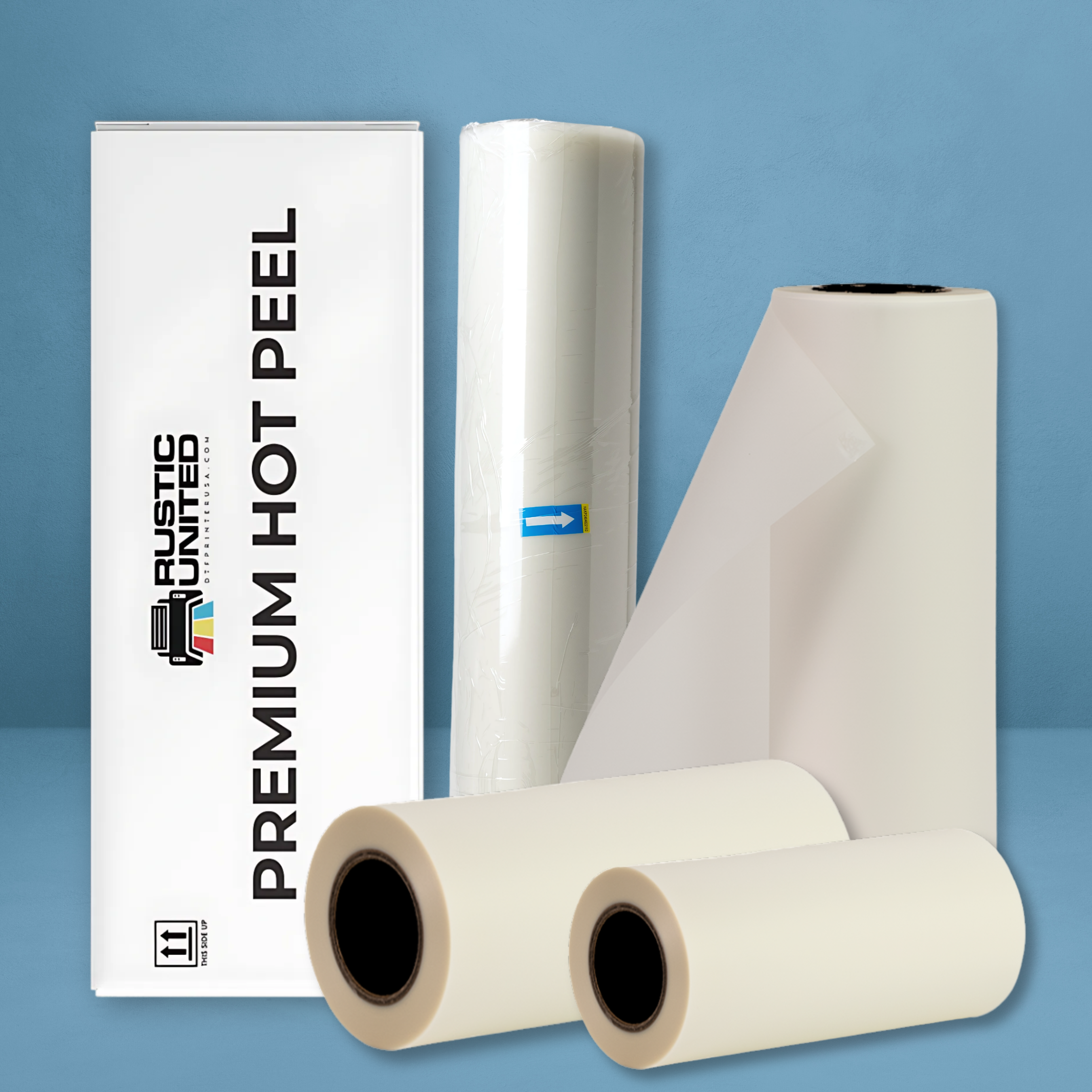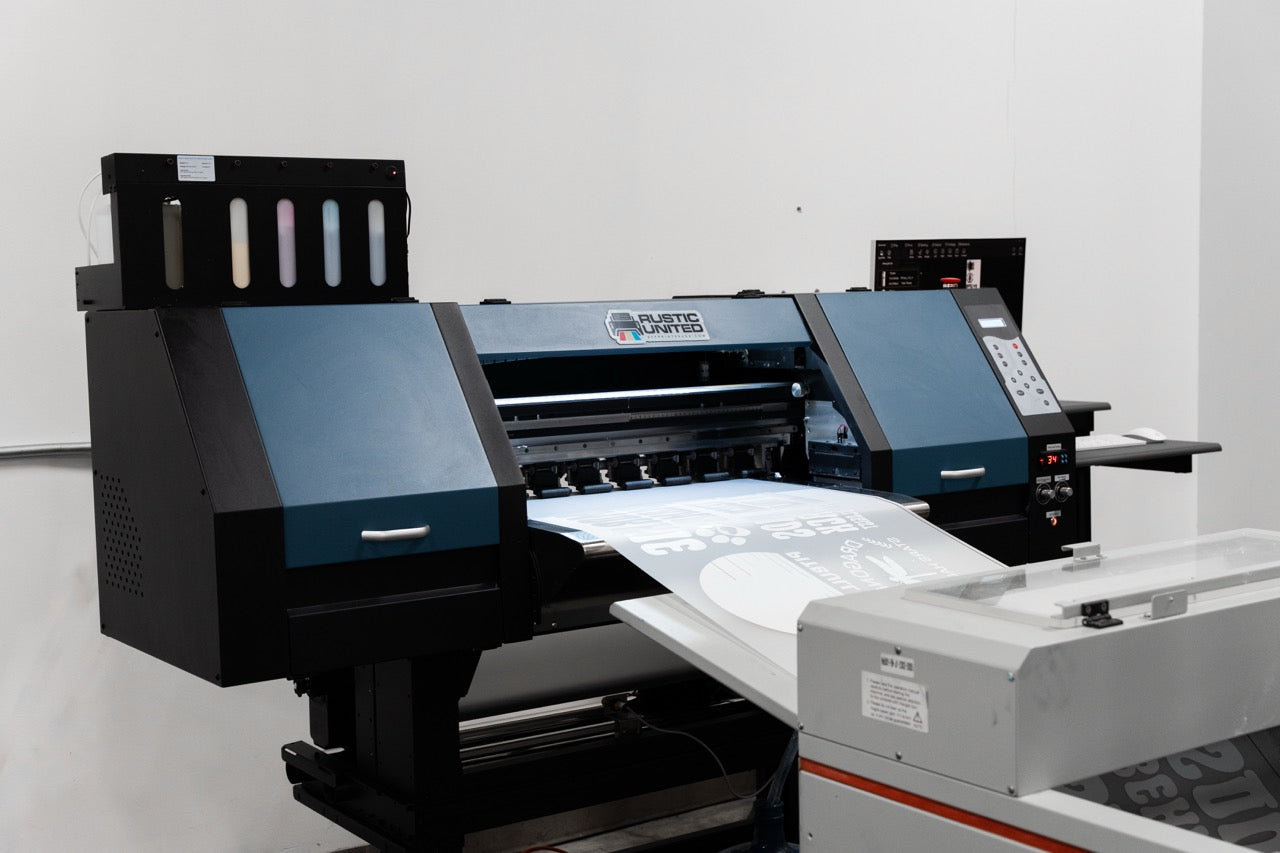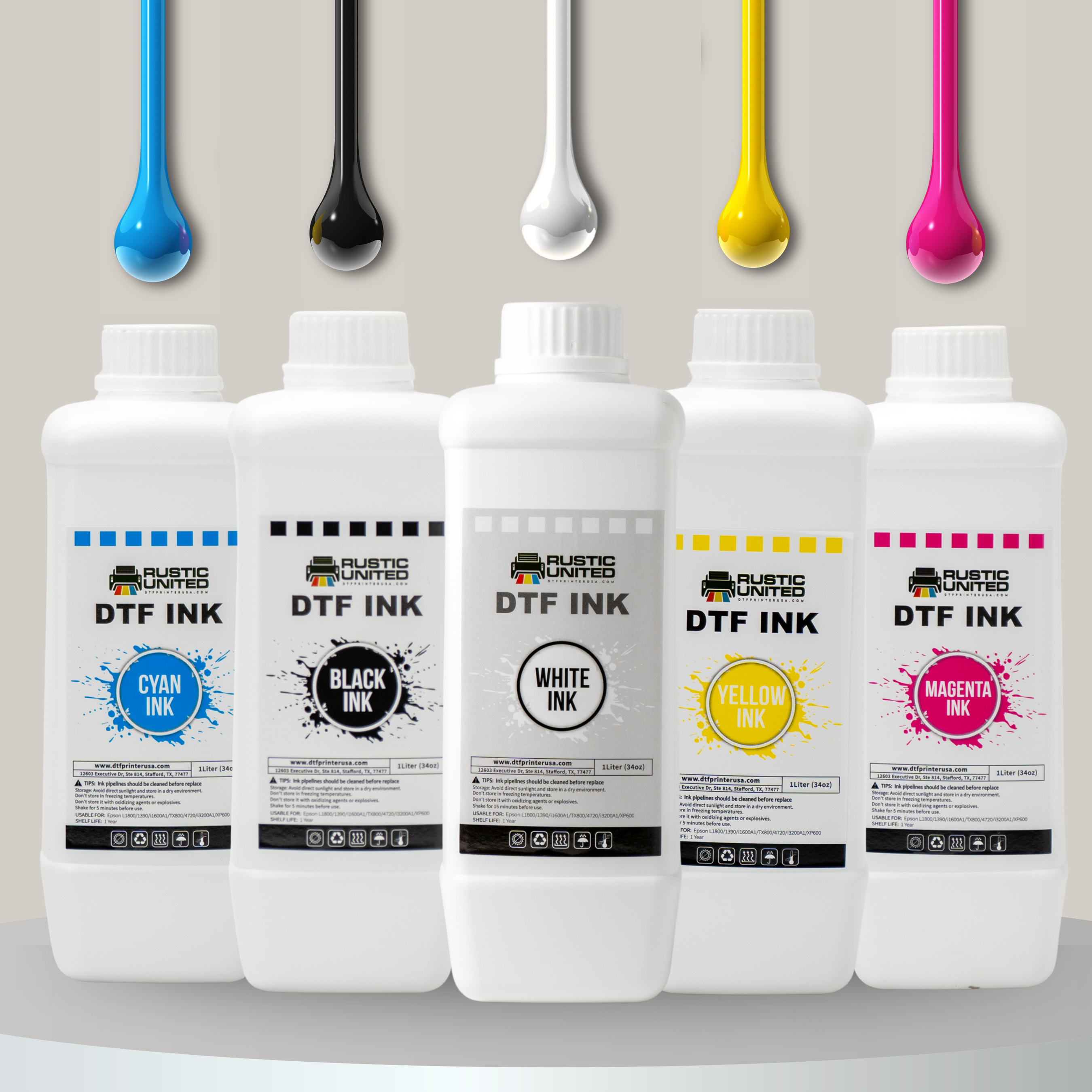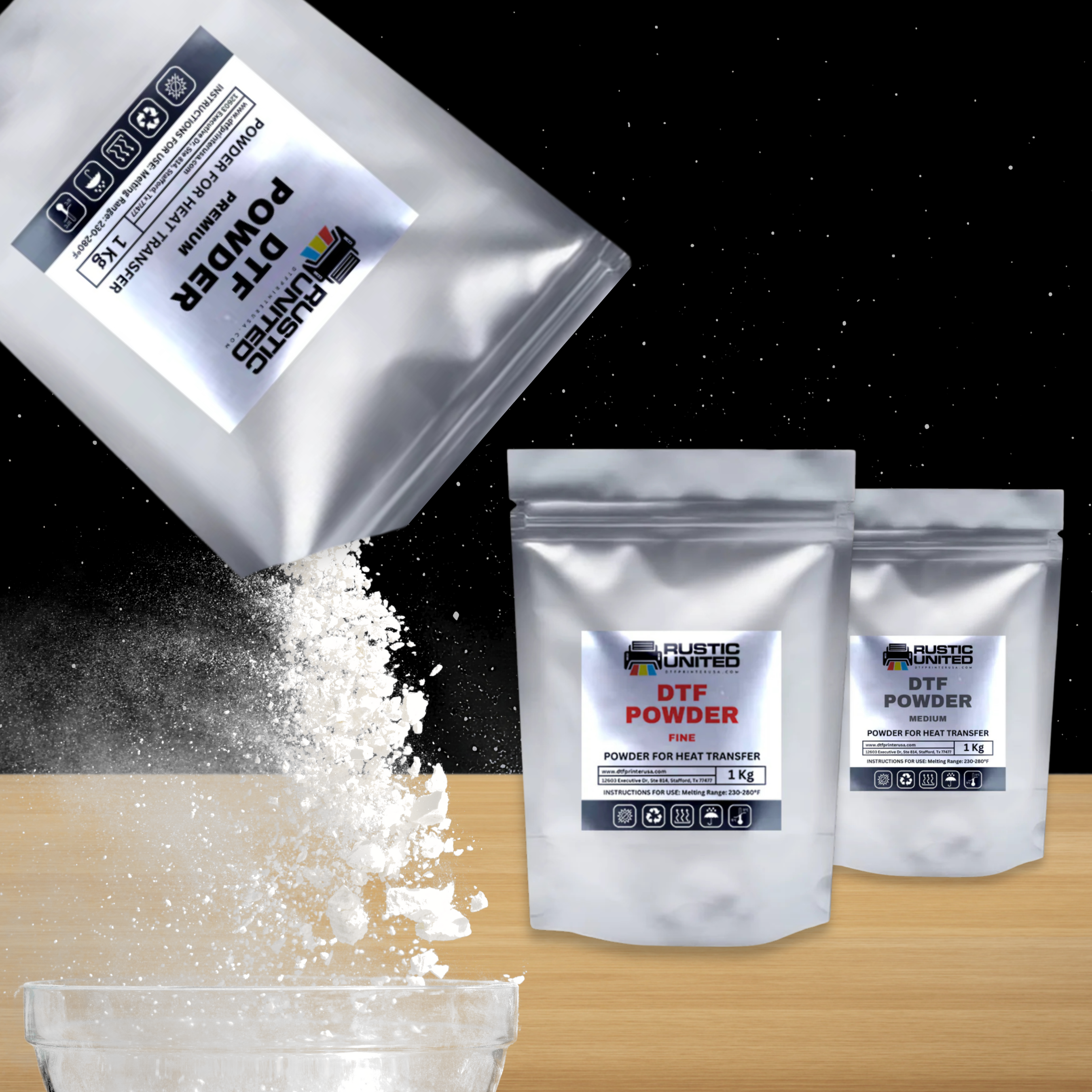Meet Our Partner DTF Printer USA for DTF Supplies
DTF Supplies

DTF FILMS
Premium Hot Peel DTF Films deliver crisp, vibrant transfers with flawless release. Designed for smooth application, these films ensure professional-quality prints every time. Perfect for all types of garments, our films work seamlessly with any DTF setup.

Our trusted partner
DTF Printer USA
DTF Jersey proudly partners with dtfprinterusa.com, a trusted name in the DTF printing industry. Known for their premium-grade supplies and expert support, they offer everything from printers and films to top-quality inks and powders. If you're looking to upgrade your DTF game, we highly recommend checking out their full selection!
Recently viewed products
DTF supplies refer to the specialized materials and tools used in the DTF printing process, a method that allows full-color, high-resolution designs to be transferred onto fabric—especially garments—using heat and pressure. These supplies typically include PET films, DTF inks, hot-melt powders, transfer adhesives, and compatible printers.
DTF supplies are essential because they determine the durability, clarity, and vibrancy of the final print.
Unlike traditional screen printing, which requires separate screens for each color and is often limited in design complexity, DTF printing allows for fine detail, full color gradients, and even photo-realistic transfers—with less setup and more versatility. Whether you're printing custom t-shirts, jerseys, or promotional materials, using high-quality supplies ensures your work stands out, lasts longer, and feels better to the touch.
Must-Have DTF Supplies
DTF supplies are the core components required for Direct to Film printing, a relatively new yet game-changing technology in the custom garment and textile industry. The basic supplies include:
PET Films – The base on which your design is printed before being transferred to fabric.
DTF Inks – Specially formulated pigment inks designed to bond with the film and transfer powder.
Hot-Melt Adhesive Powder – Applied after printing; it melts during the heat press process, binding the print to the fabric.
DTF Printers – Typically modified inkjet printers that can handle white ink and print on PET film.
Curing Equipment – Heat presses or ovens used to set the powder before transfer.
These supplies are essential because each component directly affects print quality.
High-quality PET film prevents warping or peeling. Premium powders create a stronger bond and feel softer on fabric. Reliable inks ensure vibrant colors without bleeding or fading. When used together, these supplies allow for vivid, durable, and stretch-resistant designs—something traditional methods often struggle with.
DTF Supplies for Starting at Home
To start printing DTF at home, you'll need a DTF-compatible printer, PET film sheets, DTF inks (including white), hot-melt adhesive powder, and a heat press. Optional but useful tools include a curing oven or a heat gun to cure the powder before transfer.
DTF and Screen Printing Material Differences
DTF printing uses digital ink and powder adhesive, while screen printing relies on physical stencils, plastisol inks, and mesh screens. Unlike screen printing, DTF requires no screens, no setup time, and can handle full-color designs with gradients right out of the printer—perfect for small batches or one-offs.
Where Can I Buy High-Quality DTF Supplies Online?
Trusted online stores like DTF Jersey offer a wide range of high-quality DTF supplies, from premium inks and films to reliable DTF printers and powders. They stand out among the DTF supplier sources with fast shipping, bulk pricing, and a strong reputation among small businesses and home-based creators.
Choosing the Best DTF Supplies
When choosing DTF supplies, quality and compatibility should be your top priorities. Look for PET films with good ink absorption and anti-static coatings, which ensure cleaner transfers. Inks should be highly pigmented and stable—especially the white ink, which plays a crucial role in opacity and color vibrancy. The adhesive powder should melt evenly and bond well with fabric without feeling too stiff or rubbery. Check for supplier reliability as well: consistent stock, clear specifications, and responsive support can save you a lot of headaches down the line.
Impact of DTF Supplies on Print Results
High-quality DTF supplies directly affect color accuracy, durability, and wash resistance. Poor ink can fade or clog nozzles; bad film might cause smudging or poor release; low-grade adhesive can lead to cracks or peeling after a few washes. On the other hand, premium supplies give you sharp, vibrant prints that hold up over time—making your work look professional and last longer.
DTF Supply Compatibility with Printers
Not all printers can handle DTF printing. You’ll need DTF printers that can run pigment-based DTF inks, often a converted inkjet (like an Epson L1800) or a dedicated DTF printer. Using regular desktop printers or incompatible ink types will result in clogs, poor adhesion, or total failure. Make sure your printer’s firmware, ink system, and rollers are compatible with DTF films and inks before jumping in.
Proper Storage for DTF Supplies
Proper storage is crucial to keep your DTF supplies fresh and functional. Store PET films in a cool, dry place, away from direct sunlight to prevent warping or static buildup. Seal your powders tightly in airtight containers to avoid moisture contamination, which ruins their bonding ability. Inks should be shaken regularly and kept at room temperature, preferably in their original bottles. Treat your supplies like perishables—because in a way, they are.
Eco-Friendly DTF Supplies
There are low-VOC (volatile organic compound) inks and biodegradable adhesive powders now entering the market, along with recyclable PET films. They’re not yet as widespread or cheap as traditional options, but if sustainability matters to your brand, it’s worth sourcing from a supplier that specializes in eco-conscious printing materials.
How Often Should DTF Films and Powders be Replaced?
There’s no fixed rule, but films and powders should be replaced once their performance drops—typically after a few months of regular use. If your transfers start to lose vibrancy or don’t adhere well, it's a red flag. Powders can clump over time, especially in humid conditions, and films may develop static or lose their coating. Regularly check your stock and don’t hoard supplies past their prime—they won’t do your prints any favors.
What Supplies are Needed for DTF Printing?
You need DTF printers, PET film, DTF pigment ink, hot melt adhesive powder, and a heat press to transfer designs. For better results and workflow, a curing oven and RIP software are also recommended. You can use a uv DTF supplier.
What do I Need to Make My Own DTF Transfers?
You'll need some DTF transfer supply. High-quality PET film, DTF inks, powder adhesive, and a compatible printer setup. After printing, the design must be cured and heat-pressed onto fabric to complete the transfer.
What do I Need to Get Started with DTF?
Modified or purpose-built DTF printers, RIP software, PET film, inks, powder, and a heat press are the core components. With these tools, you can start creating vibrant, durable transfers at home or in a small studio.
What Materials are Used in DTF Printing?
DTF printing uses PET film for transfer, water-based pigment inks (including white), and a thermoplastic powder for adhesion. These materials work together to create vivid, stretch-resistant prints on fabric.
Can I Print DTF Without Software?
Not really—RIP software is essential for managing color layers, especially the white ink underbase. Without it, your prints will lack quality, alignment, and vibrancy.


